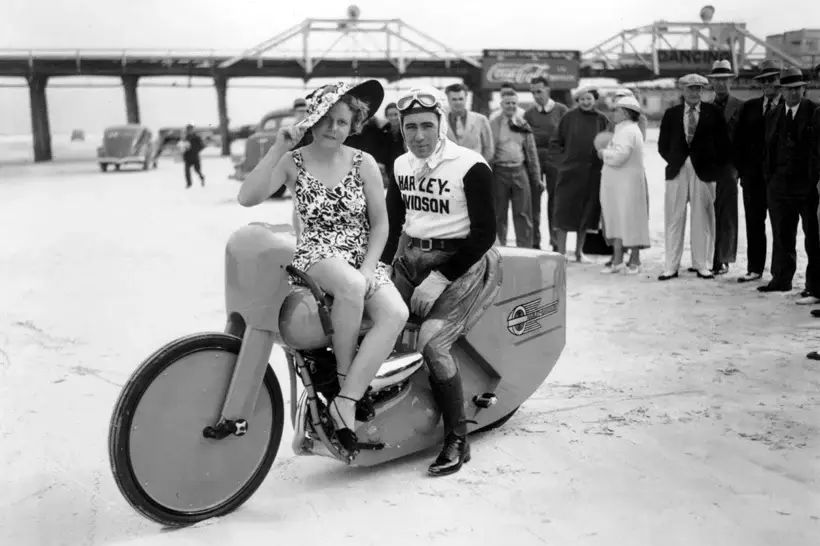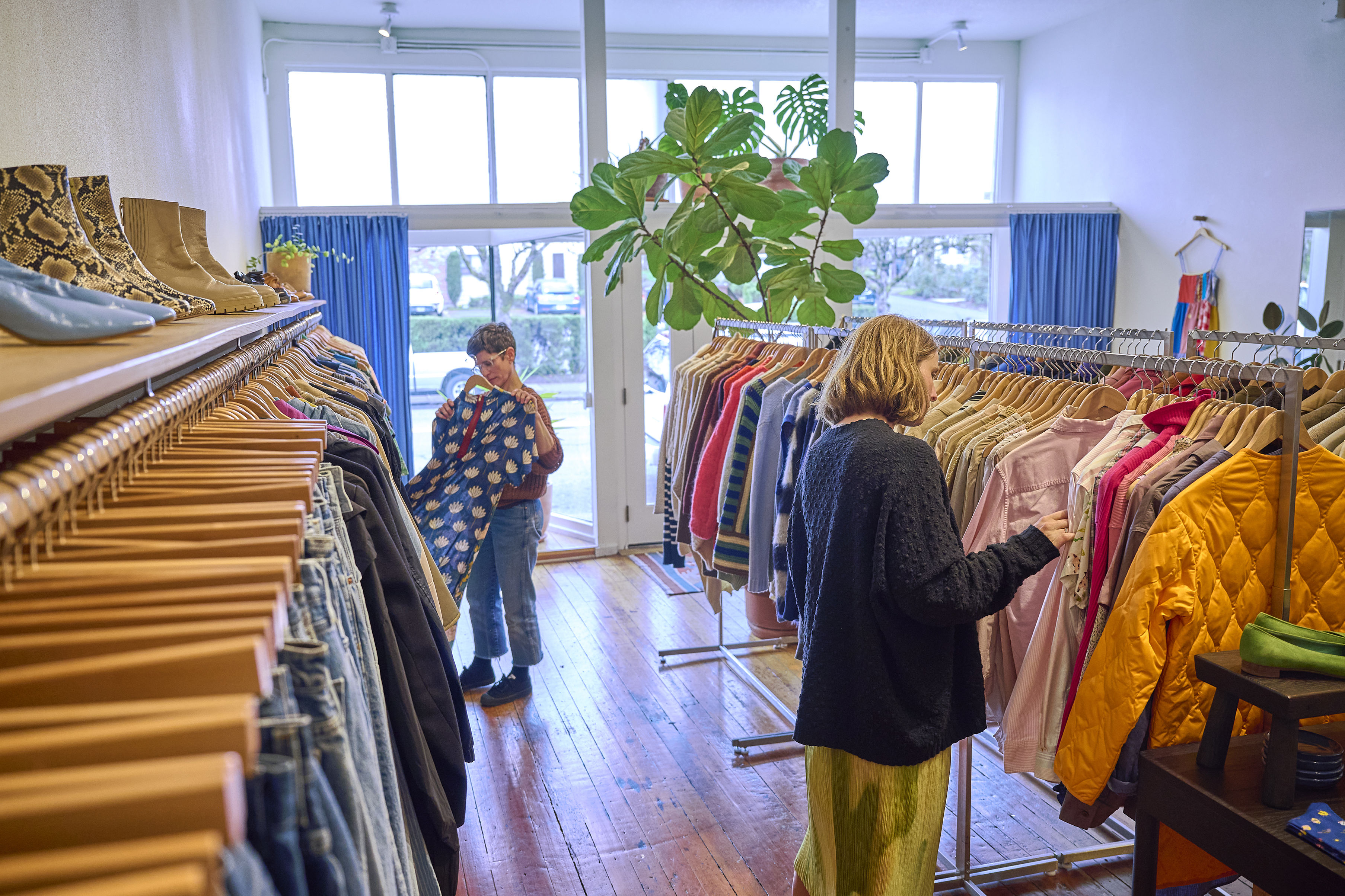The Best Photo of Portland's Fashion Designers Ever Taken
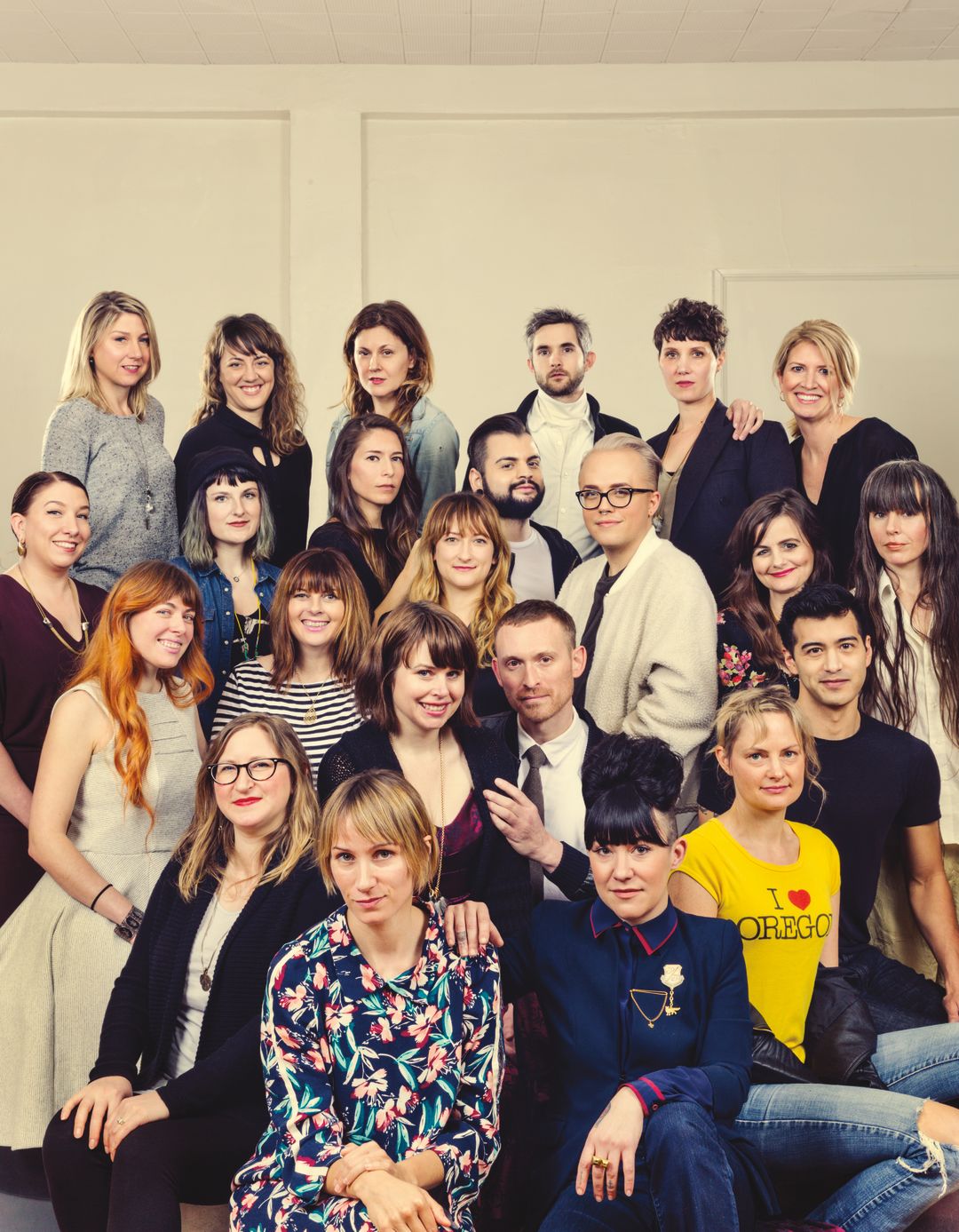
Front row (from left to right): Kate Towers, Michelle Lesniak
Second row: Anna Cohen, Holly Stalder, Adam Arnold, Elizabeth Dye
Third row: Lizz Basinger, Tiffany Bean, Laurs Kemp, Bryce Black, Brady Lange
Fourth row: Amelia Blakeman, Cassie Ridgway, Marcela Dyer, German Madrigal, Sarah Bibb, Julia Barbee
Back row: Wendy Ohlendorf, Sara Bergman, Claire La Faye, Bobby Bonaparte, Liza Rietz, Hillary Day
Image: Holly Andres
Class photos. Those group photos teachers awkwardly arranged you, elbows atop a neighbor’s shoulder, JC Penney smiles at the ready to preserve a moment in time. We decided that those nostalgia inducing pictures shouldn’t only be reserved for a class field trip to the zoo and gathered together the biggest group of Portland fashion designers we could muster and snapped them as one. The group runs from longtime pillars of the scene like Holly Stalder and Adam Arnold (prom posing together at center), to newbies like German Madrigal and Laurs Kemp (right behind).
More than that, we let them reflect on Portland’s changing design landscape and share some great stories in their own words.
Designer: Kate Towers
Years in existence: 16
katetowers.com
Best known for: Manipulating fabrics in a way that make most of my pieces one of a kind or a few of a kind, weather it be through hand dying or distressing, limited color-ways, etc.
How the industry here has changed: It's definitely more saturated, but I think this is everywhere, not just Portland. Everyone is making and selling something, which is not a bad thing, just makes it all the more important to put your stamp on your work.
What do you wish more customers knew: I often only make one or a few of each piece. I try to source my fabrics locally and use up existing bolts, so sometimes it's only possible to make two or three of something and then it's gone.
A memorable fashion moment: I don't know if there is just one, but back when we would put on these huge group fashion shows with all of the designers at seaplane, they were really special. They took months of planning and there was no better feeling then when your line went out. It's a combination of wanting to throw up and feeling proud. It lasts for about 17 seconds but is worth all of the work.
What can Portland do to help designers: I'd like to think people are grasping the slow fashion movement more and more, and paying attention to what they buy, buying higher quality goods that will last longer. Buying direct from independent designers is really important, so we can keep operations sustainable and moving forward.
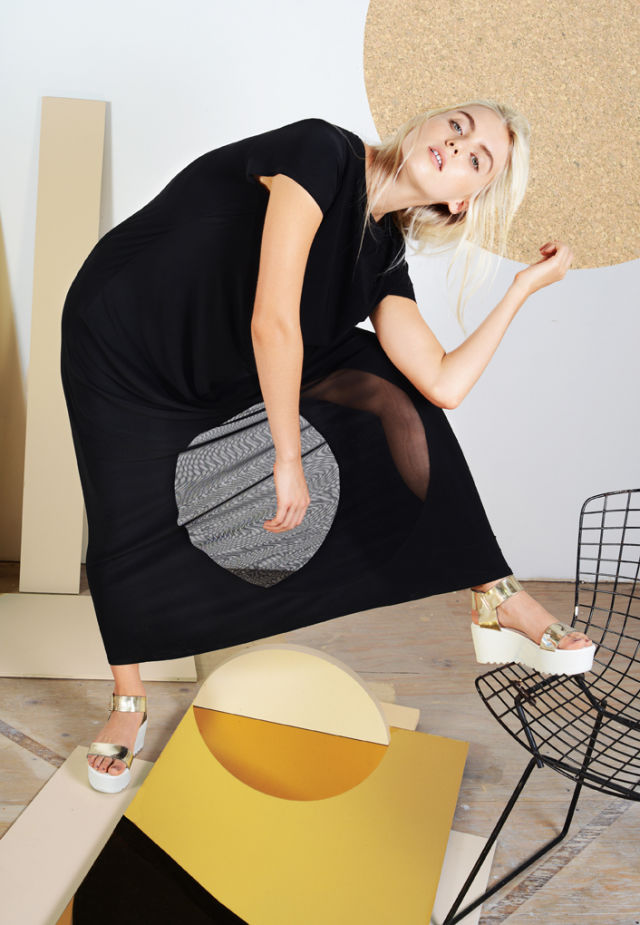
Image: Autumn Northcraft
Designer: Sara Bergman
Years in existence: 6
www.ilovesarabergman.com
Best known for: Cut-outs, geometry, circle shirts, comfortable modern witchy vibes
What do you wish more customers knew: That being a seamstress or tailor or pattern maker is really an artisan skill that takes many years to develop. In an era of fast fashion and disposable clothing, it’s easy to overlook the training and hours it takes to become really good at these skills.
Favorite piece: Last year I made a button-up shirtdress with big drapey bat wings and half-moon cut outs…I feel like it’s the closest to my vision for what I want my line to become. It’s a mix of tailored precise lines and comfortable loose shapes. I made one for myself that I wore all winter!
What can Portland do to help designers? Affordable studio space is an absolute necessity. If the city wants to support creative professionals, artists and designers need space to create and manufacture that is affordable, especially for people who are just starting out.
Designer: Liza Rietz
Years in existence: 15
www.shopsixseven.com | www.lizarietz.com
Best know for: Having modern, sculptural designs.
How industry here has changed: When I started designing and making clothes I was only 21 and didn't know much about the larger industry but I felt very excited to be a part of the smaller community that seemed to be burgeoning at the time. I got my start selling at Seaplane in 2002 and the scene there was very DIY for multiple reasons: 1) the designers that sold there came from the perspective that clothing was art and that allowed designers to make one of a kind pieces. 2) Most designers primarily made everything themselves because there wasn't a larger industry to support them–there was little or no manufacturing or garment factories to help with small scale production.
There also weren’t a lot of boutiques that displayed local fashion. Seaplane was the primary hub. Flash forward 15 years - The industry has expanded in many ways. There are more boutiques, more designers, more manufacturing and production help. It still feels like there is a need for manufacturing on a smaller scale for designers who want to have smaller production runs. Perhaps that's why so many of us are still up late nights sewing our own pieces!
What you wish more customers knew: I wish customers knew more about slow fashion and the price tag attached to that. As long as you can get a party dress for $30 at stores like Forever 21, a $300 dress that is hand made is going to seem steep. I think more people are starting to value the process behind a handmade garment that is not mass produced, but its taking some re-training to get consumers to support clothing that is handmade. On the flip side, I hear more customers complaining that they go into boutiques and see a $300 dress that is poor quality, made out of polyester and manufactured in China. So, it seems like people are starting to pay attention to quality. I also don't think that many people know I still offer custom made garments made to fit people's measurements. You can pick out a design in my shop and it can be made to fit.
What can Portland do to help designers: The city is paying attention–it seems like there are a lot of conversations about the Portland Fashion scene and how it can be supported. Hopefully these conversations can lead to action. We need affordable rents! More and more designers and artists are getting pushed out of their spaces due to rents being hiked up.
Designer: Hillary Day
Line: Hillary Day Design
Years in existence: 7
www.hillaryday.com
Best known for: Bewitching waterproof coats for women. Elegant outerwear. Pretty coats that keep you dry. Lady outerwear. You choose.
How industry here has changed: Portland has really supported the culture of makers. Talent, production facilities, supply resources have all improved dramatically.
What you wish more customers knew: I wish customers knew that making apparel is a labor of cuckoo love. We do it because we can't help it! My coats are meant to be worn in any city on any day - even if it's not stormy. The fabric is beautiful and functional.
What can Portland do to help designers: I'd love to have a support group for apparel designers–a critique group to help us all work through ideas, ride out a trend, talk each other out of a bad moment, and generally exist to encourage each other to keep at it.
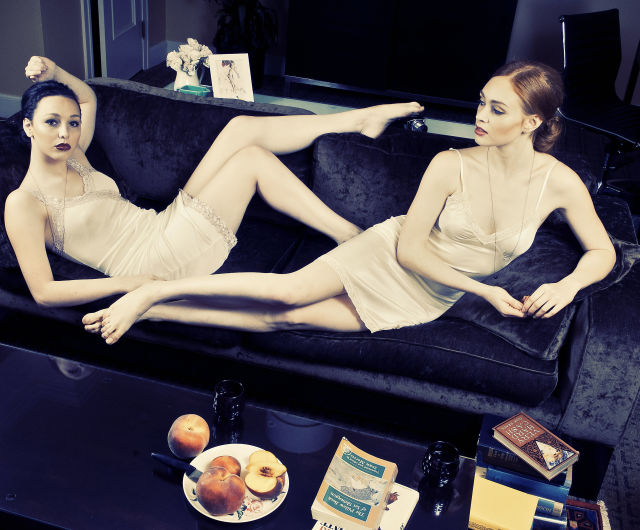
Image: Tomasz Karwowski
Designer: Sarah Bibb
Years in existence: 14
follypdx.com
Best known for: In Portland, I think I am best known for my super functional and beautiful slips and flowy dresses which go hand-in-hand.
How industry here has changed: There are definitely more small lines springing up annually, which is exciting. The actual industry doesn’t seem to have changed much. Portland is still missing real infrastructure so it seems that most small lines stay that way. We are sourcing all of our materials outside of Portland.
What you wish more customers knew: Since I also own a retail store (Folly) and sell directly to the consumer, I have a lot I wish they understood, It is expensive to produce everything in-house but I believe in the sustainable aspect of making things–it’s not just cool, it is meaningful. But the temptation of cheap, cheap, cheap is very hard to compete with. We are seeing more people using the store as a sort of “showroom” and then spending their money online. Recently people have begun to say things like, “I’m just here to get ideas”….I wish people knew how much that hurts.
Favorite piece: I am extremely proud of the lingerie we make. We have worked hard to bring a perfect, functional, sexy and insanely affordable American product to the market.
What can Portland do to help designers: The press and fashion producers are very supportive in Portland and that is wonderful. I do wish there was more focus on educating the public about WHY it is important to support local artists. Putting your money where your mouth is the only way to keep art alive. I think the major hurdle facing designers in Portland is as simple as making a living. Everyone loves to say we have so many creative people, but for a lot of us this is a career not just a cute hobby.
Designer: Elizabeth Dye
Years in existence: 11
elizabethdye.com
Best known for: Gowns for weddings and events.
How industry here has changed: Now that Portland is much more on the cultural radar nationally and internationally, I think it plays to its (perceived) audience more. The Project Runway streak of Portland-based winners has led to a different kind of designer–there wasn’t much fame-seeking when I started out. We were in our own world.
What you wish more customers knew: I’m happy to make anyone a crazy amazing gown for any reason whatsoever, not just weddings—we all need more celebration in our lives!
A memorable fashion moment: The Little White Dress show at Disjecta when it was in the Templeton Building at the foot of the Burnside Bridge. A loose concept led to total alchemy between artists and musicians. Since each designer only made one piece, it led to some extraordinary creative ambition. I cooked up a Miss Havisham ensemble from a billion scraps of antique lace (Hazel Cox modeled). Adam Arnold made an eerie, doll-perfect dress for a little girl who was borne onstage in a palanquin. I believe someone else’s model sang opera while walking the runway. Pure magic.
What can Portland do to help designers: Recent efforts to plug independent designers into the larger cultural/arts framework in Portland—PICA, PAM, city-sponsored projects —have been great. That access is so important to weaving fashion into the arts infrastructure and the larger economy. As for encouragement, here’s the deal: fashion design is hard, and it’s meant to be. It’s hard anywhere, and the city should belong to those designers who are committed to making it work here—that’s how you pave the path for others. I think Portland is ready to curate—to focus its recognition on those designers who really contribute to the community over time, who demonstrate excellence. When a fashion community is new it needs mostly to be nurtured. But Portland is growing up, and so should its fashion scene.
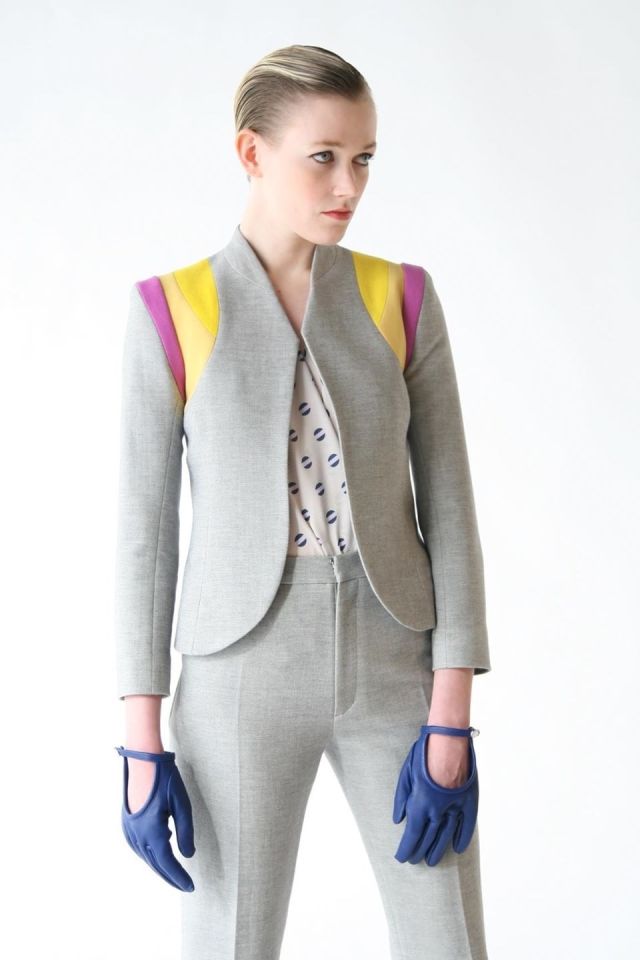
Image: Christy Klep
Designer: Adam Arnold
Years in existence: 18
adam-arnold.com
Best known for: Being Portland’s most respected and rebellious designer.
How the industry here changed: It went from a few people making moderately relevant clothing (mostly tee shirts and deconstructed “one of a kind” pieces), to a whole bunch of people making moderately relevant clothing (shapeless shifts and “concept pieces”).
What you wish more customers knew: Customers understand, but I wish more people realized that my work is more affordable than they think.
A memorable fashion moment: When I crashed a Portland Fashion Incubator show at the Portland Art Museum in 2003. Bored with the insufferable designs of the time, and the copycat way of presenting them, I decided to unleash a minivan-load full of friends in my designs on the fashion show in progress.
What can Portland do to help designers: We need to create a standard of excellence if we, as a small community of creatives, are going to be at all respected or recognized in the long run. This means that not everyone gets an “A” for effort. There needs to be something to strive for; something that we can look up to, and that others can recognize as quality work being thought of and produced here.
I propose that the city hold an annual contest of excellence in design and manufacturing. The judges could be from distinguished sectors of the design and business community (think PNCA, Wieden + Kennedy, Portland Art Museum, Nike, Adidas, PDC, The Mayor, The Monthly, etc.) and contestants would be judged on every element of their process, from initial concept to final product. Five winners would be chosen, and from these five, two would receive city subsidized work spaces, articles in every major local publication, and the honor of being awarded the title of “City Treasure”, complete with a formal ceremony and fashion show.
Designer: Amelia Blakeman
Line: Amelia
Years in existence: 5
helloamelia.com
Best known for: Casual-fancy dresses with classic shapes, flattering everyday fancy. Also eclectic caftans.
How the industry her changed: I see more new designers starting up and more groups and businesses popping up to support them. I think there's an increase in awareness and support for the local fashion industry among the general public now too. I like to think that a rising tide lifts us all. It's of course a struggle and no one gets rich as an independent designer, but despite the rising costs to operate in the city, I feel like its still a good place to be an independent, emerging designer.
What you wish more customers knew: I wish more people knew off that bat that my line is designed to fit a range of bodies–lithe to curvaceous, XS to 3X. Even after three years in a brick and mortar boutique, with signs indicating our size range, I have people surprised when they realize I make and carry clothing in larger sizes. If you're shopping in my store we also include complimentary tailoring–even a small alteration can make a huge difference in how your clothes fit. I can't even count the number of women who have come in saying "I have the weirdest shaped body" and feel like nothing is made to fit them. Spoiler alert: your body isn't weird. Most of us aren't an off the rack shape or specific size.
A memorable fashion moment: I bought my wedding dress at Seaplane shortly before they closed–a Julia Barbee dress in the reconstructed vintage style she's often known for. I was hating wedding dress shopping, stumbled upon this dress while just out looking around and it reinforced this feeling that Portland fashion was really something special. Something I hadn't found elsewhere.
What can Portland do to help designers: As a designer and the owner of a boutique here in town that represents a number of local designers I feel like I have a couple perspectives. Portland does a lot of talking about our local designers. Visitors know that Portland is home to multiple Project Runway winners and there's a buzz about local fashion happening. The press support is awesome; the general local sentiment is in favor of local fashion. Then there's how people actually end up spending their money. Locally made clothing will never compete with overseas production costs (and nor should they for a host of reasons that I'm not going to go into.) If you appreciate Portland's fashion industry, the best way to show that is to actually support it. Buy local clothing. Shop local businesses that carry local designers. That's what keeps us going.
Designer: Lizz Basinger
Years in existence: 6
LizzBasinger.com
Best known for: Creating structural and modern designs out of knitwear by using; pleating, seaming, and darting techniques to enhance the natural contour of the body.
What you wish more customers knew: I hope customers understand they're making an incredibly thoughtful, and positive impact on an entire industry when they choose to purchase from an independent designer. Everyone has a vague idea as to why the fashion industry is terrible–I could go on, and on about that subject. Though, when purchasing from independent artists as opposed to chain stores, customers are ensuring artists and makers are being paid properly for their work. Customers have the power to put money back into our own economy, and create jobs by supporting small, American based businesses.
Favorite piece: It's complicated. Throughout the design process it's really easy to love what you're doing, then when it comes time to produce it, it's easy to start hating it. My favorite pieces are the ones I'm dreaming about for future collections. I love improving upon each collection, and I think my best work is still ahead of me.
What can Portland do to help designers: I'm so thankful for the community of designers we have. So many of us are more than happy to help each other out, because the majority of us are just self-funded, half crazy hustlers. We can relate to each other's goals, and are able to learn from our mistakes. We're truly supportive of each other, and having a supportive community is a great asset to have.
I think a great way to encourage artists to stay, and succeed in Portland is to ensure they have a place to work. When I started my business, I was sharing a spare bedroom with my musician boyfriend. It was so cramped, and needless to say, distracting. It was really hard to keep motivated. Moving into my own studio has enhanced my business and designs so much. In the past 3 years, my business has grown immensely. We've expanded from selling in 3 stores locally, to over 12 nationally. I'm lucky enough to have a small-scale production space, which I love so incredibly much, though the rents in my building have more than doubled since I moved in. It's important to know that all businesses start small. Our community needs to support the arts as much as we support local sports, restaurants, tech companies etc. They're all vital assets to our beautiful city.
Designer: Holly Stalder
Years in existence: 16
hollystalder.com
Best known for: Starting Seaplane with Kate Towers.
How the industry here has changed: Locally made clothing or fashion shows are not as unusual as they were 10 or 15 years ago.
A memorable fashion moment: Dana Pinkham did a funeral procession fashion show at the lone fir cemetery in 2009. It was a group show focused entirely on creativity and not focused sales, seasons, or shopping.
What Portland can do to help designers: I would love to be more optimistic about the growth of fashion design in Portland, but I worry that it is becoming harder as it becomes more expensive to live and work here.
Designer: Claire La Faye
Years in existence: 15
clairelafaye.com
Best known for: Bridal luxury with an edge. And maybe a few rock and roll/reconstructed tees back in the day.
How the industry here has changed: For one thing, it was much smaller fifteen years ago. A few "indie" boutiques with local designers. It's grown exponentially since then. A lot of talent has sprung up here in the last decade.
What do you wish more customers knew: Hand made is so much better than made in China.
A memorable fashion moment: The Seaplane fashion show at "The Plant" in 2004. I was the height of the DIY movement in Portland. The era of one-of-a-kind meets Goodwill meets Courtney Love. Artists and designers were crawling out of the woodwork, the mayor was in attendance, the champagne was flowing, the stars were aligned and we were all in it for the art and the after party.
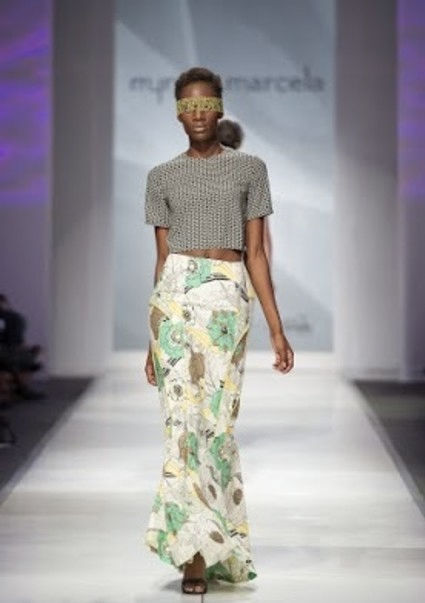
Image: Yi Yin
Designer: Marcela Dyer
Line: Myriam Marcela
Years in existence: 2.5 years
myriammarcela.com
Best known for: Attention to detail and mixed prints.
What you wish more customers knew: When a customer has the opportunity to be up close to one of my pieces, that’s when it all pays off. That’s when they are able to see that what I do isn’t just making clothing, for me it’s a work of art. Each piece is handcrafted to perfection. I have learned to put out there, the very best of what I can do; if it doesn’t meet my own personal expectation, I will go back and redo it. Quality over quantity plays a big role in my label. I love to hear from my customers that when they wear one of my pieces they get so many compliments; and, they love knowing that they are wearing something that’s one of only a very few, if not a one-of-a-kind.
A memorable fashion moment: This picture taken for Portland Monthly's BEST OF THE CITY is very emotional for me. In 2002, as a brand new Portlander recently arrived from Guadalajara, I walked into Kate Towers’ and Holly’s store, Seaplane. I remember so clearly the joy of seeing local designers showcasing their labels and I thought to myself, “one day, Marcela, that will be you”. I still have Seaplane's business card with its cut out plane windows, which I think it was pretty cool. Over the next several years–marriage, having and raising my children–I was busy. In 2008, I read an article in The Oregonian about Adam Arnold which, by the way, I still keep in my stack of inspirational papers. Again, I told myself, “one day, Marcela, one day”. 2011: I was getting ready to take control of my dream of starting my own label when I found an article that featured Anna Cohen. I cut out her picture and glued it to my vision board. She is still there. By the end of 2013 I was able to now pursue my goal of creating my own label. Now in 2016, I look at a photo of some of Portland's best designers and I see myself standing next to these same people who inspired me to be where I am today. They probably don't know the huge impact they had in my life, but I hope to be as inspirational to new emerging designers as they were to me. I believe we all inspire one another. This picture becomes a reminder of how to stay humble and turning your vision into a reality. If you can see it, you can do it.
Designer: Cassie Ridgway
Line Name: Altar Houseline
Years in existence: 6.5
altarpdx.com
Best known for: Sewing in many shades of black.
How the industry here has changed: I think with every passing year, our collective of innovative apparel designers gets a little more serious about viability in our industry. We are creating demand for independent manufacturing and deepening the perspectives of our customers.
What you wish more customers knew: I have to quote my amazing friend and mentor, Sarah Bibb, on this one, "Don't wait. If you want to live in a vibrant city full of innovative design, vote with your dollar."
A memorable fashion moment: Adam Arnold's murder scene at Content; which consequently caused the Ace Hotel to instate serious rules about fake blood.
What can Portland do to help designers: I wish there was more access to grants, tax credits, and low interest start up capital for designers--particularly the ones who create jobs and hire staff on their team.
Designer: Laurs Kemp
Years in existence: 2 years
laurskemp.com
Best known for: I hope that I'm notable for my love of films, feminism and fun. My designs are inspired by, and often named after, film directors and my female muses, and my screen-printed items–such as the boob tee and bumbum bag–are a cheeky nod to my devotion to feminism and being body-positive.
What do you wish more customers knew: Currently, I don't make a certain number of collections a year. My line is a gradual evolution of silhouettes and details that I rotate in and out every few months. I used to see that as a weakness for me, but I've come to realize it's a strength. Most of the traditional fashion industry kowtows to an antiquated seasonal calendar that most people don't respond to. In this regard, I view my line more as an art project than a traditional clothing label, so I can have a bit more fun with it.
Favorite piece: One piece in particular that embodies several of my earmarks is the hand painted Ulli Jumpsuit. It's modern, fun, the print is a not-so-secret cipher that spells out the word "women," plus I love hand-painting garments.
A memorable fashion moment: The most memorable local fashion moment for me personally is my Fade to Light runway show earlier this year. I collaborated with 11 Dance Co. to create a dance to immediately follow the show. I only told them my collection would be black and white, I wanted it to be fun and energetic and that I wanted to use the song Yama Yama by the Yamasuki Singers (a song which inspired the line, also titled Yama Yama), and they surpassed my wildest dreams.
Designer Name: Julia Barbee
Line: Julia Barbee (formerly Frocky Jack Morgan)
Years in existence: Frocky Jack Morgan 2002-2011, Julia Barbee 2011-present
juliabarbee.com
Best known for: VICE perfume, or maybe just the name Frocky Jack Morgan
How the industry here has changed: Tons of new names, new options regarding production as it used to be a lot more one-of-a-kind design. Fashion in general has changed a lot since I started, so it's just a natural progression. The fit is certainly different now, things used to be much more tailored to the body and embellished.
Favorite piece: The Animal in the Moon is my favorite fragrance, and as far as garments I still think about the first deconstructed silk top I made. I sold it years ago, but I wish I hadn't. It was made from a little baby seafoam silk kimono. Right now, my passion is a new t-shirt line called Mother Naturalist. I'm just screen printing one-of-a-kind recycled t-shirts, getting back to where I started sort of, and it's part of an exhibit I'm doing in about a year.
A memorable fashion moment: I really appreciated being a part of a show at the Museum of Contemporary Craft when they paired designers with jewelry makers. I thought the collaborative aspects were interesting, and in 2007 that was a pretty forward thinking opportunity for the curator to give the designers in the area. I'm glad to see other museums and galleries have included local designers, and fashion in their exhibitions of late.
What can Portland do to help designers? I like that more designers have found ways to sell in the heart of the city downtown, even just through one-off pop ups at the Cleaners. I remember a few years ago the Portland Development Commission was trying to help subsidize real estate downtown to encourage designers to have a presence in the districts where most tourism was happening. It would be nice if it was still an option for locals to get into the mix earlier and more easily, maybe through a grant opportunity or jury process. I would like to see the city find new creative ways to support unknown names, as that really is the heritage of the fashion scene in Portland.
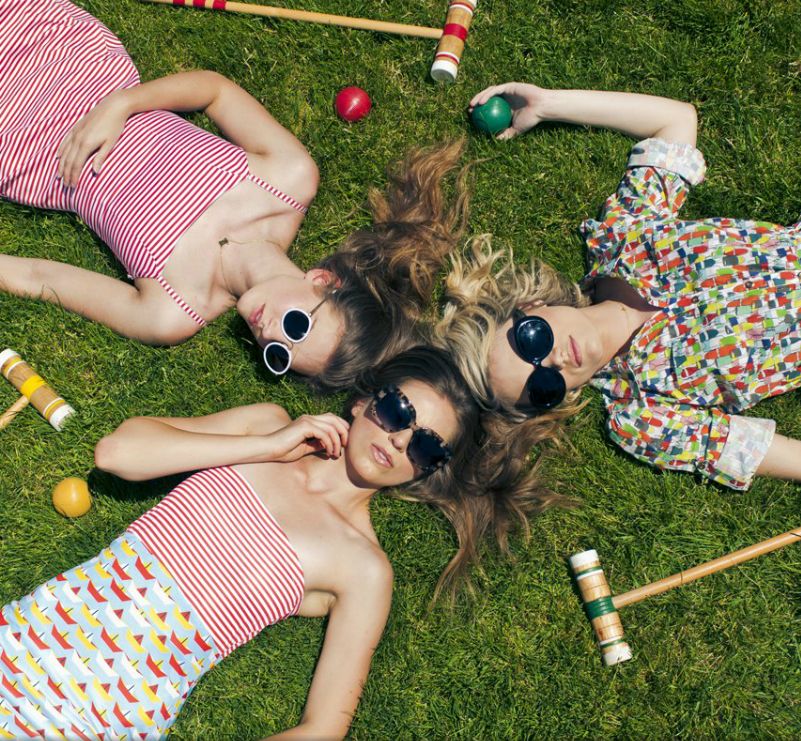
Designer: Tiffany Bean
Years in existence: 6
tiffanybean.com
Best known for: Up until this year, I have been known for great fit. I had focused on that originally, but this year I blew up everything I was doing and decided to design exactly what I wanted, not what I thought people wanted from me. It has been amazing and so much fun. And I've gotten great feedback so far from the two collections I've done with this new outlook. So I would say I'm now getting known for super fun prints that are a little bit cheeky and super girly styles. I'm working to learn how to design my own prints for my collection so it can truly be 100% what I'm envisioning.
What do you wish more customers knew: I think clothing should be fun and make you smile. I love designing and mixing prints to make a story. I wish people would give color a try! I have been told my line is not very Portland, and I agree, but I feel honored that so many Portlanders wear it and love it.
A memorable fashion moment: For my line it was the Fade To Light show this last February. I was so proud of my new collection and the movie I made with my daughter came out exactly as I wanted it and she absolutely hated making it but was so proud once she saw it so it meant so much to me, and my whole family came. That was huge for me.


